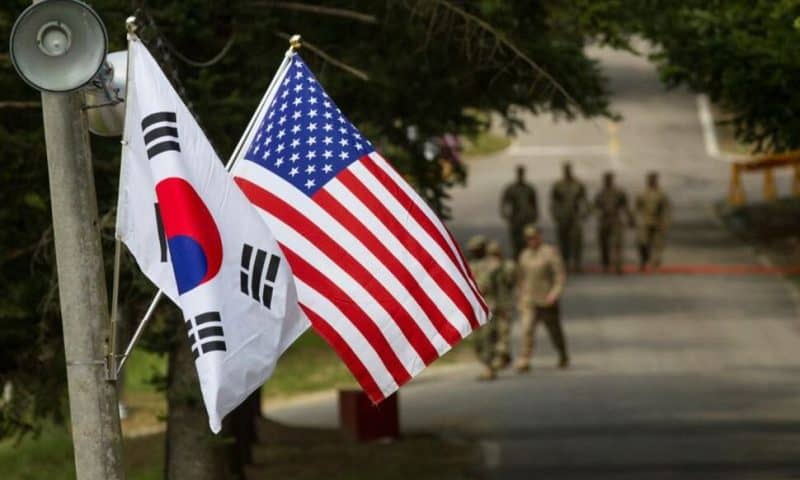INJE, South Korea – South Korean and U.S. troops held joint future combat drills involving drones, an unmanned vehicle and wearable laser sensors this week as part of efforts to modernise their militaries, Seoul’s army said on Saturday.
The training came as South Korea’s military conducts a series of annual Hoguk autumn exercises aimed at improving responses to North Korea’s nuclear and missile threats.
More than 120 soldiers from both sides joined forces to fight against a trained team of opposing forces in a mock-up town that appeared similar to the North Korean capital of Pyongyang, built at the Korea Combat Training Centre in the mountains in the eastern city of Inje.
The drills also mobilised various high-tech weapons systems aimed at beefing up future combat capabilities, with the troops wearing multiple integrated laser engagement systems (MILES), which uses lasers to simulate actual battle.
Several drones were flown for reconnaissance purposes, some also firing an assault rifle, while South Korea dispatched a multipurpose unmanned vehicle to carry wounded personnel.
Choi Jeong-Il, a captain of the South Korean army’s 25th Infantry Division, nicknamed the TIGER brigade, said the unmanned assets and the MILES gear helped identify enemies and gauge the allied troops’ casualties.
“We were able to confirm the enemy’s movements using the drones, and hit them with the cutting-edge strike equipment, which allowed us to maximise the results of the operation while minimising damage to our forces,” he said.
First Lieutenant Derek Chen from the 2nd Stryker Brigade Combat Team of the U.S. 4th Infantry Division said the drills offered an “eye-opening experience” and the assets would be beneficial in future combat operations.
South Korea’s army launched the TIGER brigade last year as a pilot unit for future warfare operations using artificial intelligence-powered drones and highly mobile fighting vehicles. It aims to transform all combat units based on that model by 2040.
The army also held what it called its first international future warfare competition for five days until Saturday, participated by some 300 troops from five countries including Britain, Uzbekistan and Cambodia.

